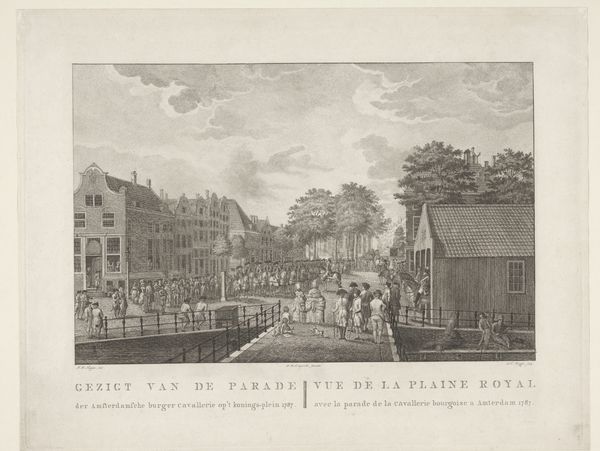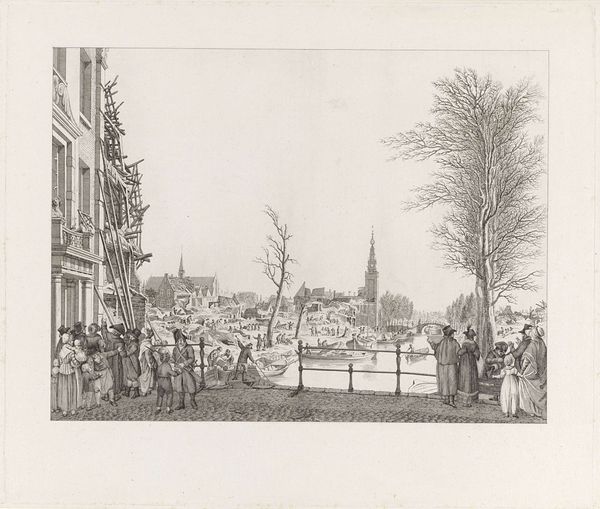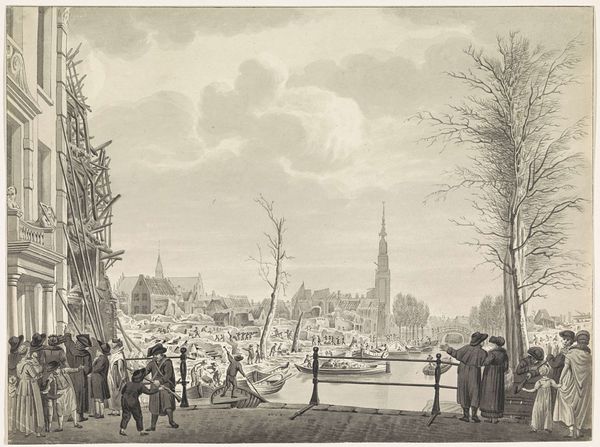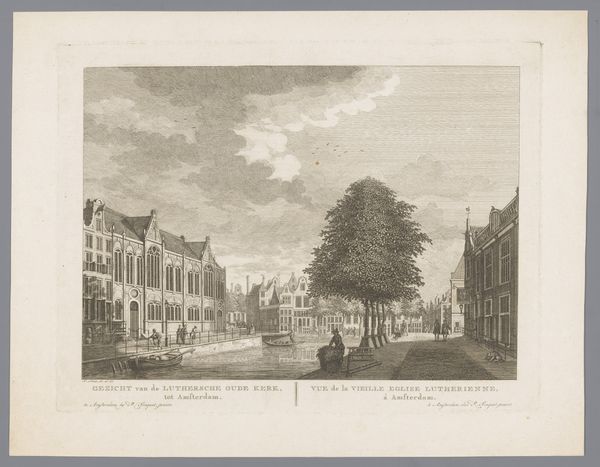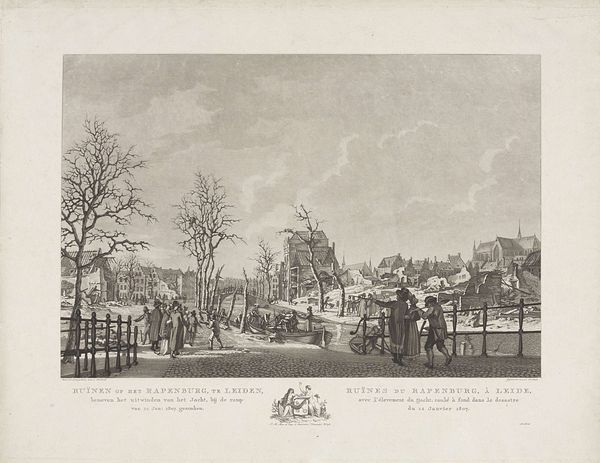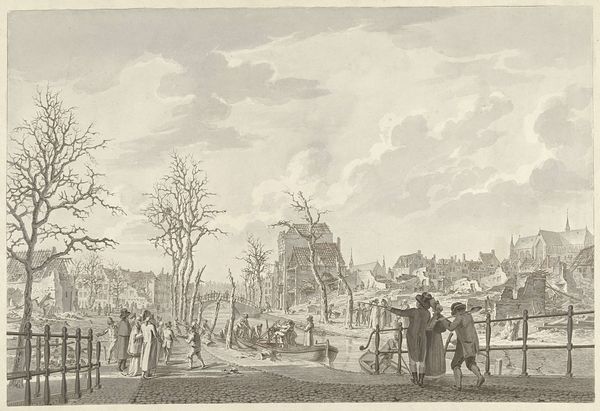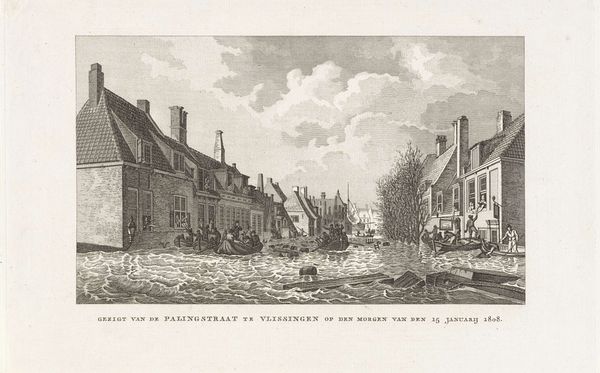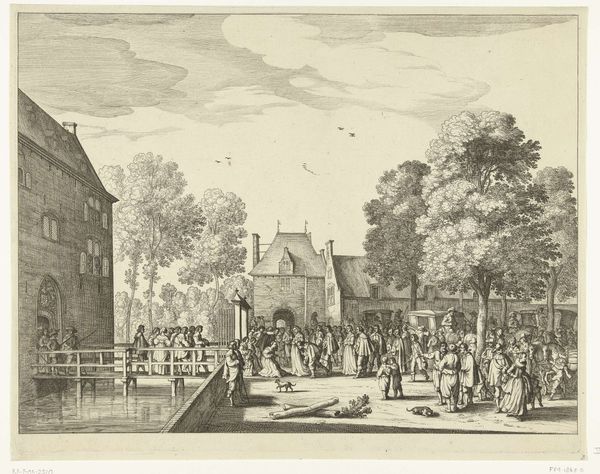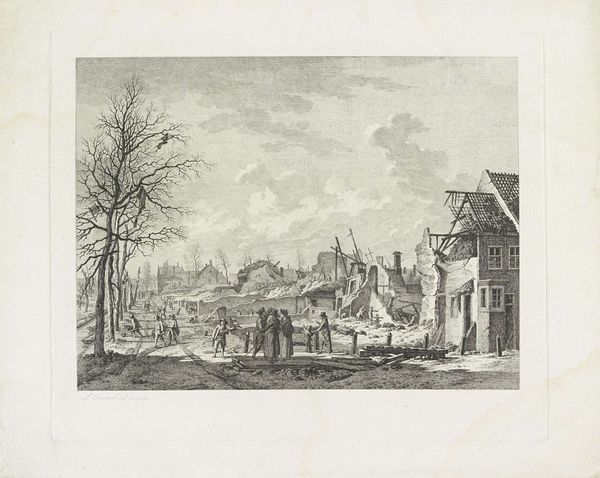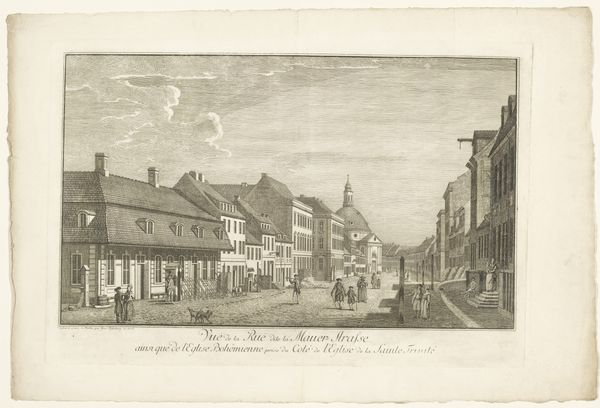
print, engraving
#
neoclacissism
#
narrative-art
# print
#
old engraving style
#
landscape
#
cityscape
#
history-painting
#
engraving
#
realism
Dimensions: height 453 mm, width 535 mm
Copyright: Rijks Museum: Open Domain
Curator: This engraving, dating back to 1807, captures a scene of devastation. It’s titled "Herstelwerk op het Rapenburg na de ramp, 1807", meaning "Restoration Work on the Rapenburg After the Disaster, 1807," made by Reinier Vinkeles, currently held in the collection of the Rijksmuseum. Editor: It strikes me immediately as…bleak. The sky is heavy, the buildings are skeletal, and even the people seem to be observing more than participating. A haunting blend of stark realism and subdued emotion. Curator: Precisely. The disaster depicted is the aftermath of an explosion caused by a ship laden with gunpowder. Consider how the event and its record became instantly embedded in the collective memory of the community. Editor: Ruined structures always whisper stories. It is a neoclassical depiction that also leans into historical record and storytelling. You know, looking at this image, I am reminded of that innate human need to document our struggles—transforming a chaotic moment into a calculated narrative for future generations. Curator: Notice how Vinkeles employs the precision of the engraving technique. This precision lends a sense of somber order to the chaos. The figures in the foreground become witnesses and commentators, allowing us to empathize with Leiden’s plight, but through a distanced, almost classical lens. They aren’t rioting, they're contemplating. Editor: I suppose. The engraving medium lends itself to documenting—like a photograph for its time. It's compelling how the architecture seems to be pleading. It feels raw and unvarnished. Yet there is undeniable humanity in the scene as well—repairing damage, coming together after utter destruction. Curator: Indeed, observe also how the presence of scaffolding foreshadows a reconstruction effort. Even amid ruins, cultural memory manifests resilience and communal repair. Editor: Well, it seems Vinkeles did more than simply record—they created a lasting symbol of endurance and transformation. Seeing beauty even amid ruins. It gives hope. Curator: And also demonstrates a powerful transformation—turning disaster into a source of future memory and resilience. It's interesting to think of what kind of emotional weight we bring to these older depictions when we look at them today.
Comments
No comments
Be the first to comment and join the conversation on the ultimate creative platform.
